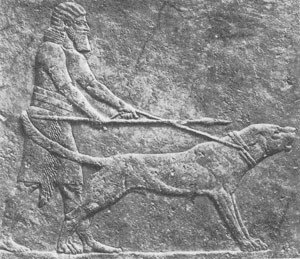 The map above shows in dark red the remaining areas where al Qaeda is still active in Iraq. The light areas indicate transit routes. This today from the Long War Journal:
The map above shows in dark red the remaining areas where al Qaeda is still active in Iraq. The light areas indicate transit routes. This today from the Long War Journal:
Nearly one year to the day of the announcement of the "surge" of US forces to Iraq and the change in counterinsurgency plan, Iraqi and Coalition forces have shrunk al Qaeda's ability to conduct operations inside Iraq, a senior US commander said.
During a press briefing in Baghdad, Lieutenant General Ray Odierno, the Commander of Multinational Corps Iraq, said al Qaeda in Iraq has been ejected from its strongholds in the cities to the rural regions of Iraq.
From late 2006 into 2007, "Iraq was caught in a cycle of bloodshed under the dark cloud of al Qaeda," said Odierno. Al Qaeda was "entrenched in numerous urban safe havens across Iraq" until the surge forces launched Operation Phantom Thunder in June 2007.
Al Qaeda in Iraq's network has been significantly degraded, but is still a threat. Al Qaeda remains active in regions near Miqdadiyah, Mosul, Hawijah, Samarra, and southeast of Baghdad in the Arab Jabour region. "Although the group remains a dangerous threat, its capabilities have been diminished," said Odierno. "Al Qaeda has been pushed out of urban centers like Baghdad, Ramadi, Fallujah and Baqubah, and forced into isolated rural areas. Many of their top leaders have been eliminated, and finding qualified replacements is increasingly difficult for them." Multinational Forces Iraq also estimates it has significantly degraded al Qaeda's ability to fund operations by dismantling its financier networks and leaders.
Operation Phantom Phoenix, the current nationwide operation targeting al Qaeda's remaining safe havens, was launched on Jan. 8. Iraqi and US forces have captured or killed 121 al Qaeda fighters, wounded 14, and detained an additional 1023 suspects. Al Qaeda's leadership has been hit hard during the operation, with 92 high values targets either killed or captured.
Iraqi and US forces have also discovered 351 weapons caches and four tunnel complexes, Odierno said. Iraqi and US forces have also discovered three car bomb and improvised explosive device [IED] factories and 410 IEDs, including 18 car bombs and 25 homes rigged with explosives. Also found were "numerous torture chambers, an underground medical clinic, several closed schools, and a large foreign fighter camp with intricate tunnel complexes," said Odierno. . .
Read the entire post here. The USA Today uses its front page today to highlight the dramatic security gains in Iraq made with the counterinsurgency strategy:
About 75% of Baghdad's neighborhoods are now secure, a dramatic increase from 8% a year ago when President Bush ordered more troops to the capital, U.S. military figures show.
The military classifies 356 of Baghdad's 474 neighborhoods in the "control" or "retain" category of its four-tier security rating system, meaning enemy activity in those areas has been mostly eliminated and normal economic activity is resuming.
The data given by the military to USA TODAY provide one of the clearest snapshots yet of how security has improved in Baghdad since roughly 30,000 additional American troops arrived in Iraq last year.
U.S. commanders caution that the gains are still fragile, but at the moment U.S. and Iraqi forces "basically own the streets," said Col. Ricky Gibbs, a brigade commander in southern Baghdad.
The fight to control Baghdad is the centerpiece of the counterinsurgency strategy launched a year ago by Gen. David Petraeus, the commander of U.S. forces in Iraq. The plan, popularly known as the "surge," seeks to reduce sectarian and other violence by moving troops off large bases and into dangerous neighborhoods to protect civilians.
The 310 neighborhoods in the "control" category are secure, but depend on U.S. and Iraqi military forces to maintain the peace. The 46 areas in the "retain" category have reached a level where Iraqi police and security forces can maintain order, a more permanent fix. The remaining areas have fewer security forces based there, though they are not necessarily violent.
In February 2007, when additional U.S. forces began arriving, only 37 Baghdad neighborhoods were in the "control" and "retain" categories.
The drop in violence in Baghdad and elsewhere helped avert a religious civil war, said Thomas Hammes, a retired Marine colonel and author.
. . . The U.S. military is wary of handing over security responsibility too quickly to Iraqi forces. "There are concerns we'll pull out of here too fast just because we have such great gains," Gibbs said by phone from Iraq.
. . . Although weakened and pushed out of Iraq's major cities, al-Qaeda remains focused on trying to dominate the capital, Lt. Gen. Raymond Odierno, the No. 2 U.S. commander in Iraq, said Thursday. "Their long-term sights are still set on Baghdad," he said.
Read the entire article here.















































No comments:
Post a Comment